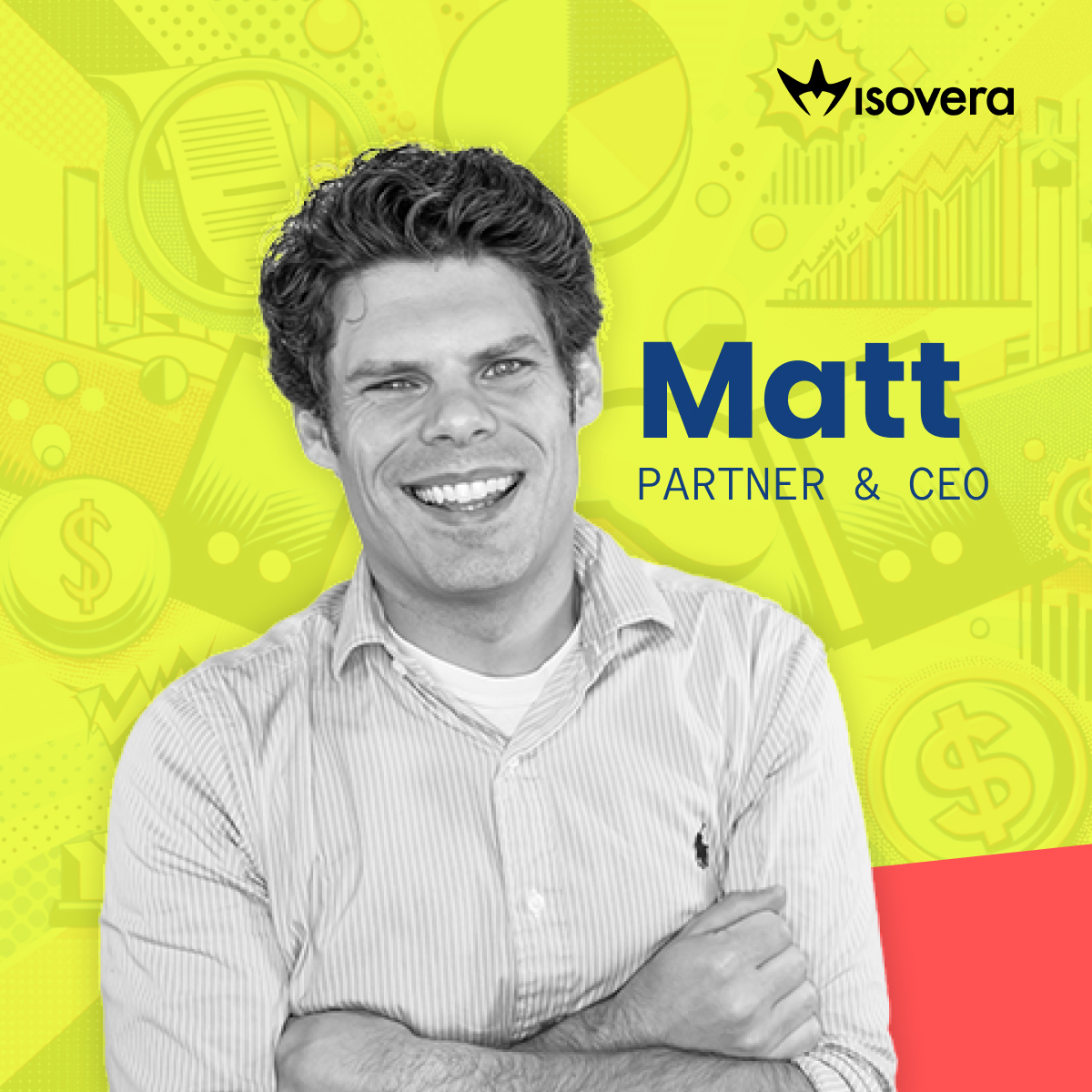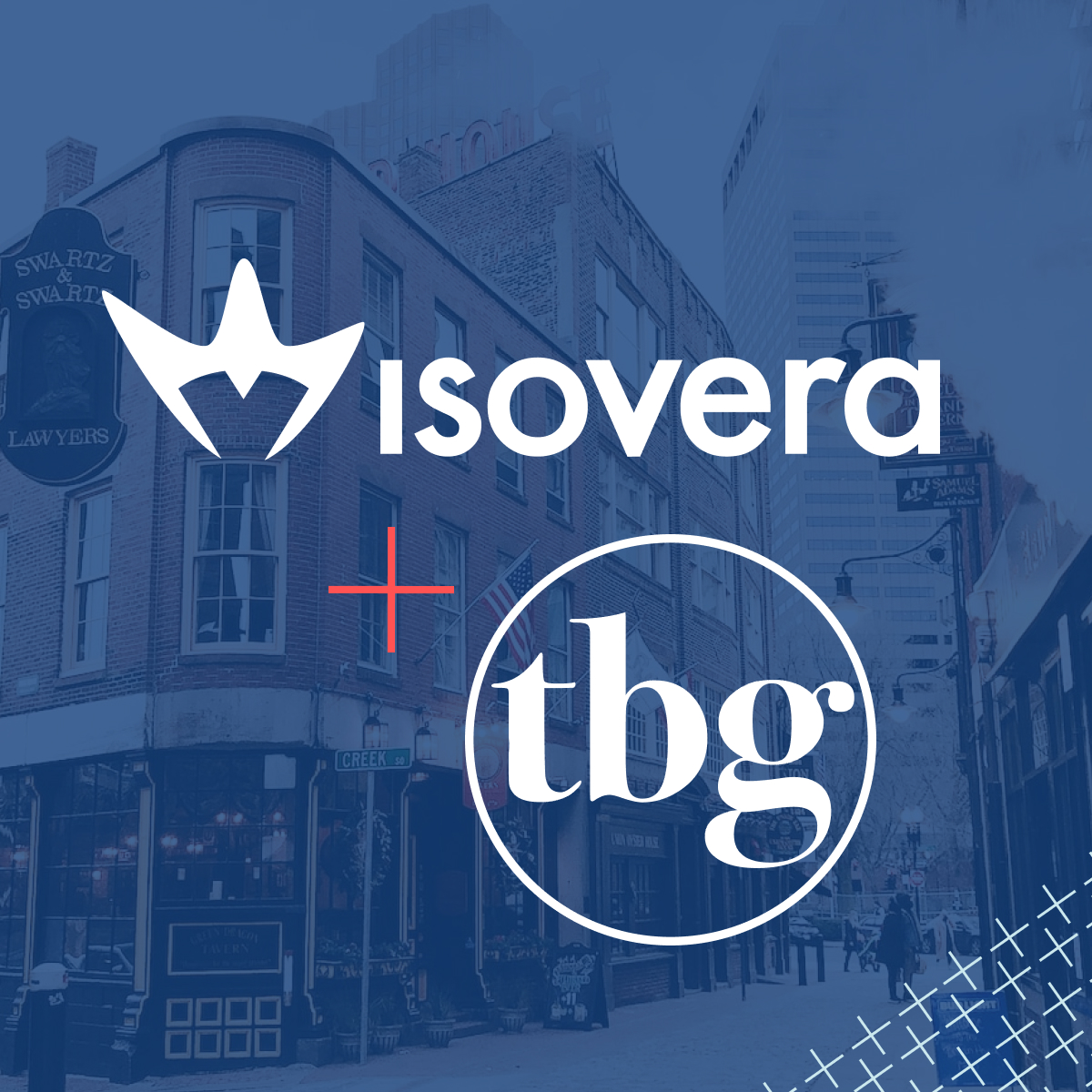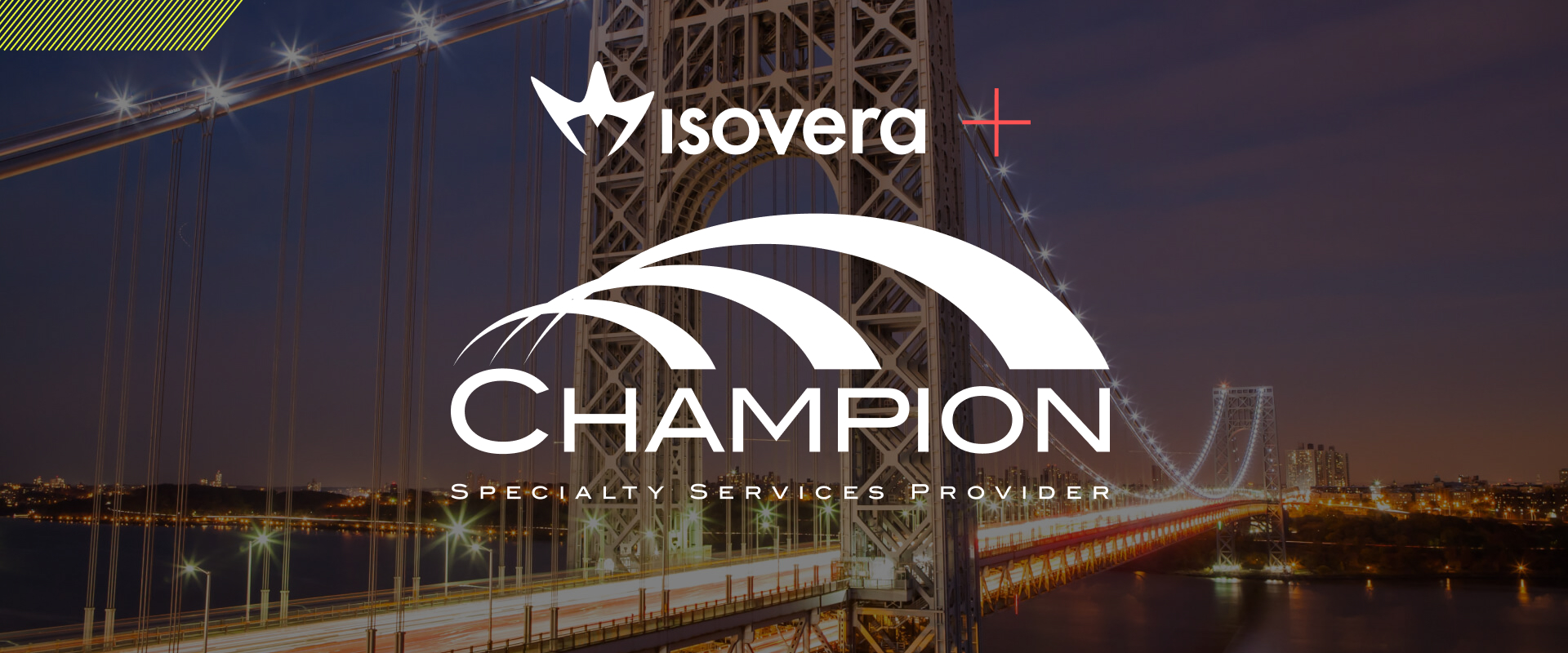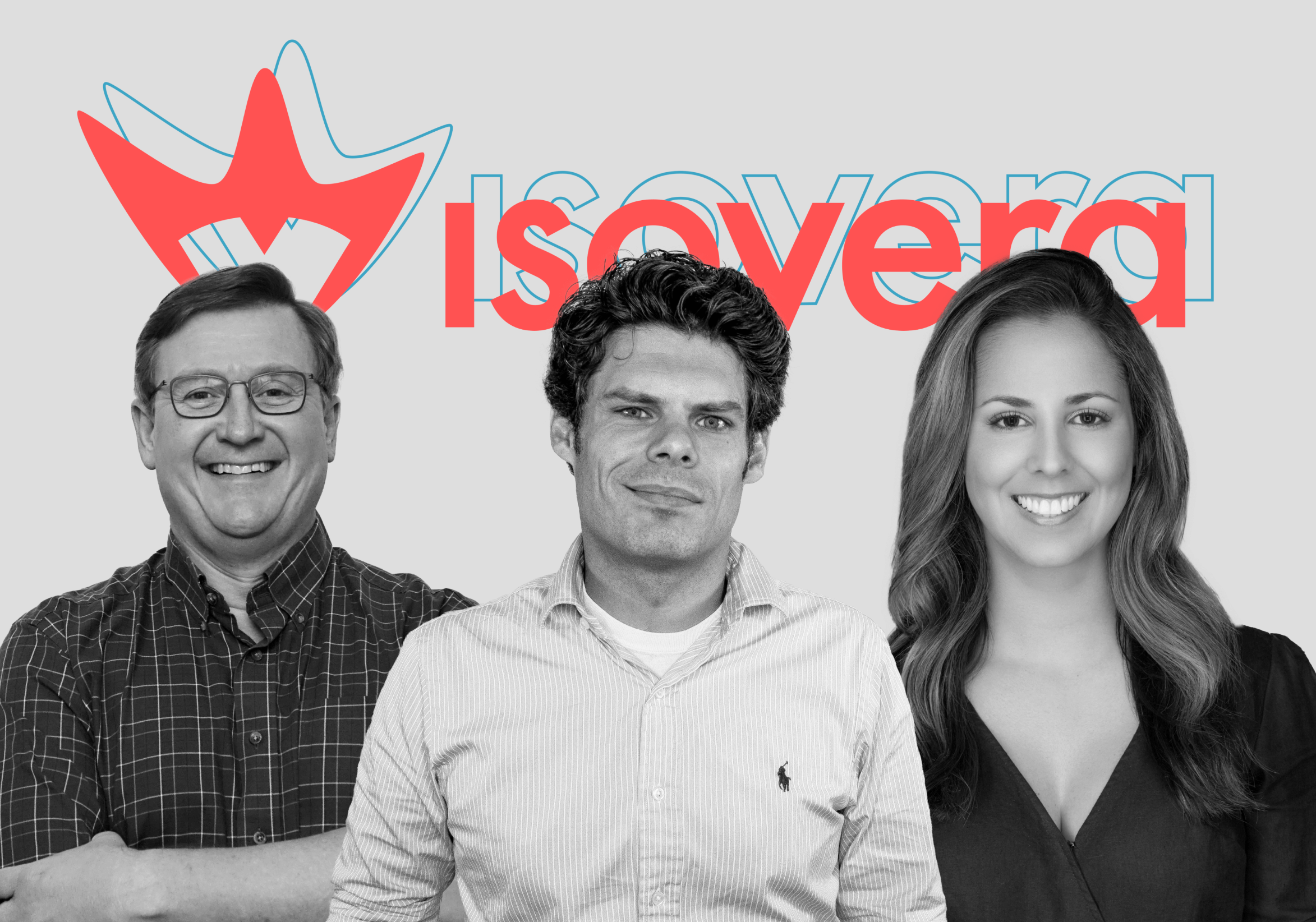In a universe of workplaces, agencies are in a class of their own. The dynamic nature of agency work can appear both glamorous and exhausting–interesting clients with great projects, but also long hours and crazy deadlines. It’s a reputation based in reality–agency work is both thrilling and a grind. We at Isovera love agency life, and decided to take a look at what keeps us and other “agency people” thriving in the fast lane.
We plan to talk to all staff and leadership, but wanted to kick things off by chatting with Matt Naffah, Isovera Partner and CEO. In addition to answering some 50K feet questions on the topic of agency life, we asked Matt to tell us about his own experiences coming up in a digital world.
Isovera
What kind of attributes do people who work in agencies have in common? Because there are a lot of very talented designers, strategists, and developers who don’t do well in that environment. So what makes people suited to agency life?
Matt Naffah
I’m going to first caveat by saying I’ve been pretty much an agency lifer, outside of one gig on the client side that lasted maybe three months. Agencies just run at a different speed. One of the benefits of working at Isovera is that you have the ability to work with multiple clients who do many different things. During the interview process I tell people that you might wake up in the morning and work on a cybersecurity account, then tackle brand design for a brewery around lunch, and finish the day by recreating the platforms used by the Roman Catholic Archdiocese of Boston. So you have to be able to switch gears quickly. It’s rare at any agency–even those focused on just one vertical–for people to be focused on one aspect of marketing. In a more traditional setting, for example, you might be an email marketing manager tasked with managing one set of deliverables. But in an agency, that’s not true. You’re also thinking about where those emails are going and how to measure them. You’re thinking about the copy that goes into them and the social media that surrounds them and any brand messaging that needs to be included in them. That’s an aspect of agency life that I really like. It’s not one dimensional. It’s holistic with a spice of chaos.
Isovera
Creativity really does seem to require a degree of chaos.
Matt Naffah
Yes. And good agencies successfully manage that chaos to help their people thrive–and bad ones don’t. Chaos doesn’t have to be negative.
Isovera
At Isovera you’re not just managing yourself, you’re managing a team. How do you keep their energy up?
Matt Naffah
Keeping the energy charged starts first and foremost with the clients. We have a goal to work with clients who want to work with us. That positive energy between agency and clients is what energizes people–not just my team but on the client side, too.
I’ve always looked for clients who have a desire and passion to work with us and who view us as a true partner–and vice versa. That’s what gets us excited about getting up in the morning. Because we’re excited to work on something new for that client, to design that new campaign, to launch that website. I mean, we’ve all had difficult clients. That feeling of having to wake up in the morning working on an account you don’t like can really drive you down.
Going back to your first question, working in agencies is not easy. So at least when you’re having a positive experience on your accounts, it makes you feel ok if you’re staying late to get a website launched or are frustrated with writer’s block or having trouble tapping into the next strategic idea. It feels better because you’re working on amazing projects with great clients.
Isovera
How does the dynamic nature of an agency–particularly Isovera–move the needle for its clients?
Matt Naffah
Our leadership and three fourths of our core team have all come from big agencies. We bring the solutions, ideas, and collective experience that comes from working with big brands into a small agency environment where we’re able to cut out the layers of red tape. We don’t have five account people managing one project–because one project just doesn’t need it. Isovera is able to be more lean as a small agency without losing any of the big agency expertise.
For example, I can tap into my experience working with Kraft, Proctor and Gamble, Dupont, Microsoft, Dell–all these accounts I’ve worked on during the course of my career–and apply everything to our accounts at Isovera. And so can the rest of our leadership team. We take our collective thought processes, ideas, and experience and deliver that wealth of experience and information directly to our client’s–with no bloat.
We’re also not afraid to admit what we do well and what we don’t do well because we partner with agencies that can complement our capabilities. We never say “we can do everything” because that’s not a service to our clients. But we do say “We can do most of what you need and because of our strong partnerships we can deliver exceptional solutions and experiences.”
Too many other agencies try to pretend they can do it all but wind up disappointing clients when it becomes clear that they’re not delivering the desired results.
Isovera
Let’s go back to your origin story for a few minutes. When did you know agency life was the life for you?
Matt Naffah
In college I interned at two agencies. I first interned at an agency in Manchester as a graphic designer in a small 10-person shop. I loved design and at that point was mostly interested in print and traditional media. I dreamed of landing that one great Times Square billboard or Super Bowl spot. However, I realized pretty quickly that although I enjoyed the creativity, being a designer was not a path I wanted to take. So I pivoted into strategy and account management–still creative, from my point of view, with a layer of problem solving that I liked. Pretty soon I discovered I enjoyed running strategy teams.
The turning point came when, out of the 15 marketing majors at tiny Franklin Pierce College in Rindge New Hampshire, I was selected for an internship at Arnold Worldwide. During group introductions, all the other interns were from elite business schools. No one had heard of Franklin Pierce and just thought it was a law school! This was the launching pad for my career. It was a non-paid 10-week gig that gave me a chance to work on two huge brands–Oral B and The Harford. I learned a lot and it became clear to me that this was the type of world I wanted to work in.
After college, I got a Junior Account Executive position at a family-run agency that specializes in recruitment advertising. A lot of brands were just moving away from traditional print to digital. Part of my day was helping clients place ads in the Boston Globe, but the rest of my day was about thinking about how to use this cool new technology called Monster.com and how to create rich recruitment experiences for some very interesting brands. It was a great job because I had a great boss–a mentor to whom I’m still connected. She had a sales background and was no nonsense. She took me under her wing and taught me to separate emotions from agency life. If I got angry over some decision I didn’t agree with, she’d set me straight and tell me to just get on with it because those emotions weren’t going to help me. That was an important lesson for me to learn as a 22 year old. I’m glad I didn’t get coddled.
Working at Digitas in Chicago was another milestone. Digitas was pure digital though they partnered with traditional agencies. From the moment I started there, my professional world has only been digital. I started creating those awful Yahoo “takeovers.” But people didn’t see them as “noise” in those days–it was groundbreaking. Agencies really began to emerge and use digital to showcase their creativity. There were so few barriers! People had been writing print ads for generations at that point and writing TV spots for over 60 years. Yes that work was still creative but everything done there was defined by everything that came before. With digital media those barriers and borders had yet to be defined. No one knew what to do in that sandbox. Every year it was something new–new technology, new platforms, new tools. This is what kept me engaged and excited about being in the agency world.
So, I never got my famous Super Bowl spots but I have created some amazing, award winning digital programs for some top brands.
Isovera
What’s an example of a program that particularly makes you proud?
Matt Naffah
When my wife was pregnant with my daughter I was working at Digitas on the Kraft account, creating an influencer program. We sent influencers samples of Kraft foods and they wrote about them. This was very early content marketing. I loved it. My boss here was also very smart and very influential. One day she took me into her office and invited me to move with her to the Proctor and Gamble account. I was excited but she felt she had to warn me because we would be working on the Always & Tampax brand. Of course I was game! Sure, I had limited personal information about that product but was pretty sure I could figure it out. And it was so great for me knowing that she wanted me with her on the account. She knew I would not be uncomfortable–even though I was the only man on the team–and that I had proven myself with Kraft. Our traditional agency partner was Leo Burnett. Some of the best work I ever did was on that account. We created rich content programs right at the start of the content marketing era. Our content was on a site dedicated to moms and daughters who were going through the transition to womanhood. In LA we created a video series that was my first real experience in engagement marketing. It was fantastic. This was 12 years ago and I still go back to those presentations and strategy decks because they can really stimulate my thinking. The campaigns were unique and I benefit from digging in and remembering what made them effective. It’s very interesting because although platforms have changed, the way consumers engage with that content really hasn’t. I’d never trade what we did there for a Super Bowl spot. And I love knowing that I created a very cool content program before content marketing was even a thing. We were laying the foundation for what future brands would do down the road.
Isovera
In addition to running a digital agency you’re a family man and softball coach (and who knows what else)! Tell us a little about all the other stuff you do and how everything works together to keep your life moving forward.
Matt Naffah
Coaching softball is fun. My daughter plays so it’s a great way to spend time with her. I’ve tried hard to separate being a coach from being a father. That’s important to do because there are 12 other girls on the field working hard. So it’s dad at home and coach on the field. In many ways it’s a lot like running a business. There is a collective group of girls that needs to do their job very well, so you have to manage the team. You also need to give attention to the individuals to make sure they are developing and growing because that’s important to collective performance. If your shortstop isn’t developing and growing she might miss that line drive down the left side of the field, meaning your team won’t do well. So you have to have that balance where you’re evolving the team but also creating plans for and giving direction to individuals so they feel like they are growing, too. It’s the same in business. Everyone needs to understand their development path. And when people are pulling in the same direction, the team succeeds.
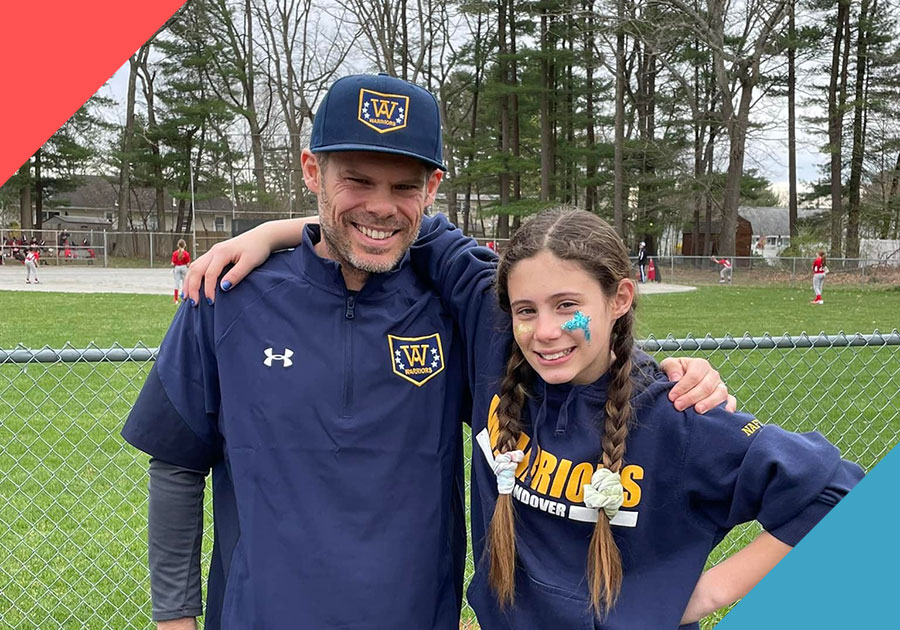
Isovera
You have a lot of stuff going on! How do you keep it together?
Matt Naffah
I try to create a good balance and carve out specific borders in time. For example, when I’m coaching, I turn off my phone. I’m available to clients and colleagues for 12 hours out of the day. So for two hours I put it in my coaches’ bag. This is a self-imposed barrier that works for me.
Smart phones mean we’re never off, but they do give us a lot of flexibility. Flexibility is a benefit of working at Isovera, too. Sure there is a “9-to-5” schedule (note I’m using air quotes) but we offer lots of flexibility. Of course, you do have to be available. And when you’re on a call with a client, you need to be focused. But if your kid has a game at 1 o’clock and you want to duck out for a couple of hours and doing so doesn’t conflict with your responsibilities, then we want you to go for it. That just gets back to what really makes people happy. We seriously hope the world adopts this model. Why lock people into a schedule that makes them unhappy? If their work is getting done, let everybody take a 90 minute kayak ride on their lunch break if that makes them more productive later in the day.
Isovera
What is one thing you try to bring to every client engagement?
Matt Naffah
Transparency. That starts when we pitch a client. Other agency models just have a business rep attend new business meetings as the mouthpiece of the agency. But when we get new business calls, it’s actually the firm leadership–me, Jim, Marc, and Marivi–on the call. We talk to the clients. We are transparent about who we are and how we work. This is not “you select us.” It’s “we select each other.” Clients have told us this made the difference for them. Also, I answer all incoming new business inquiries–me, not a canned response. I’m often up at 12:30 in the morning answering emails, saying “hey, thanks for reaching out. I looked at your site, here’s a link to my calendar. Let’s set up time to talk.” When you work with us, you are partnering with the leadership of the company. That makes a difference. It’s who we are.
You know, when I was in high school I worked at a small hardware store–maybe 12 employees. At one point a big box hardware store chain opened a few miles down the street. Everyone was fearful we’d get pushed out on pricing. But we survived and survived very well. People came in and said “I’d rather come here and pay a little more so I can get the one-on-one service from Hank who knows about paint, knows what I need, and can give me personalized solutions.”
That’s how I look at Isovera compared to other agencies. First and foremost we’re competitive on pricing. But we’re that local hardware store. When you come in you’ll talk to the owner of the store about that electrical problem you’re having. They’ll either know what to do about the problem or will ask somebody who does know. Whereas if you go to a big box chain, you may get a canned response from someone who is just trying to bluff their way through it because they want you to buy their product.
Isovera
What is the most unexpected and delightful part of your daily life at Isovera?
Matt Naffah
That there is zero routine! I’ve grown a lot in this career. Yes, I contribute to client projects but I’m also managing 401(k) plan strategies, invoicing, and doing payroll–all the things that have taught me how to be a business owner. I recently went to a meeting about state taxes and how to manage taxes now that we’re a remote company. There are so many variables to know about managing a business that I get rejuvenated by it. I’m nosy and love to learn new things.
Isovera
What else would you like to share about your experience at Isovera?
Matt Naffah
I’ve been at Isovera now for three years. When I came here I had a great job at IDG, which was mostly a publishing company. I created custom campaigns to help people understand how to use data to influence marketing programs. I used to think I wanted to go into advertising–I probably chose it randomly from a list in high school because it started with the letter A–but eventually it became my dream to run or own an agency.
So when I saw that a company called Isovera was looking for a CEO I applied. It was a six month process. I had four interviews and things ended up really working out. I was very excited to join Isovera. Within six months we brought on Jim Rich. He is one of the partners. Quite frankly I could not do what I do without him. We are peers. We don’t always agree and definitely don’t have the same process but everything we do is complementary and we have trust. He is more focused on the operational and technology side of the business and I am more focused on strategic vision and agency direction. But neither of us makes a move without agreement from the other. Sometimes that agreement takes a while and hey, we have passion, so maybe there are raised voices. But it is always a good discussion.
Once we got a clear path of where we wanted to go we brought on Marc Rust as VP of Creative and Brand Experience. He and I had worked together at another agency and had a great relationship there. Once his relationship with that agency ended, I brought him on right away even though we did not officially have a design practice or even the business to support it yet.
Eventually we brought on Marivi Bryant. She has enabled us to transition from simply offering project management to being able to offer Account Management. Anyone who has worked at agencies will tell you there is a difference between the two and that you need both but can’t have an imbalance. She has led our ability to grow our account management team which helps us build deeper, stronger client relationships. And as I said earlier, those great relationships create positive environments for the people that we work with. If you just have a team run by project managers, you have a reactionary account team. If you have both then you have the right balance of proactive and reactive. And that leads to happy teams.
Would you like to talk with Matt? You can!





